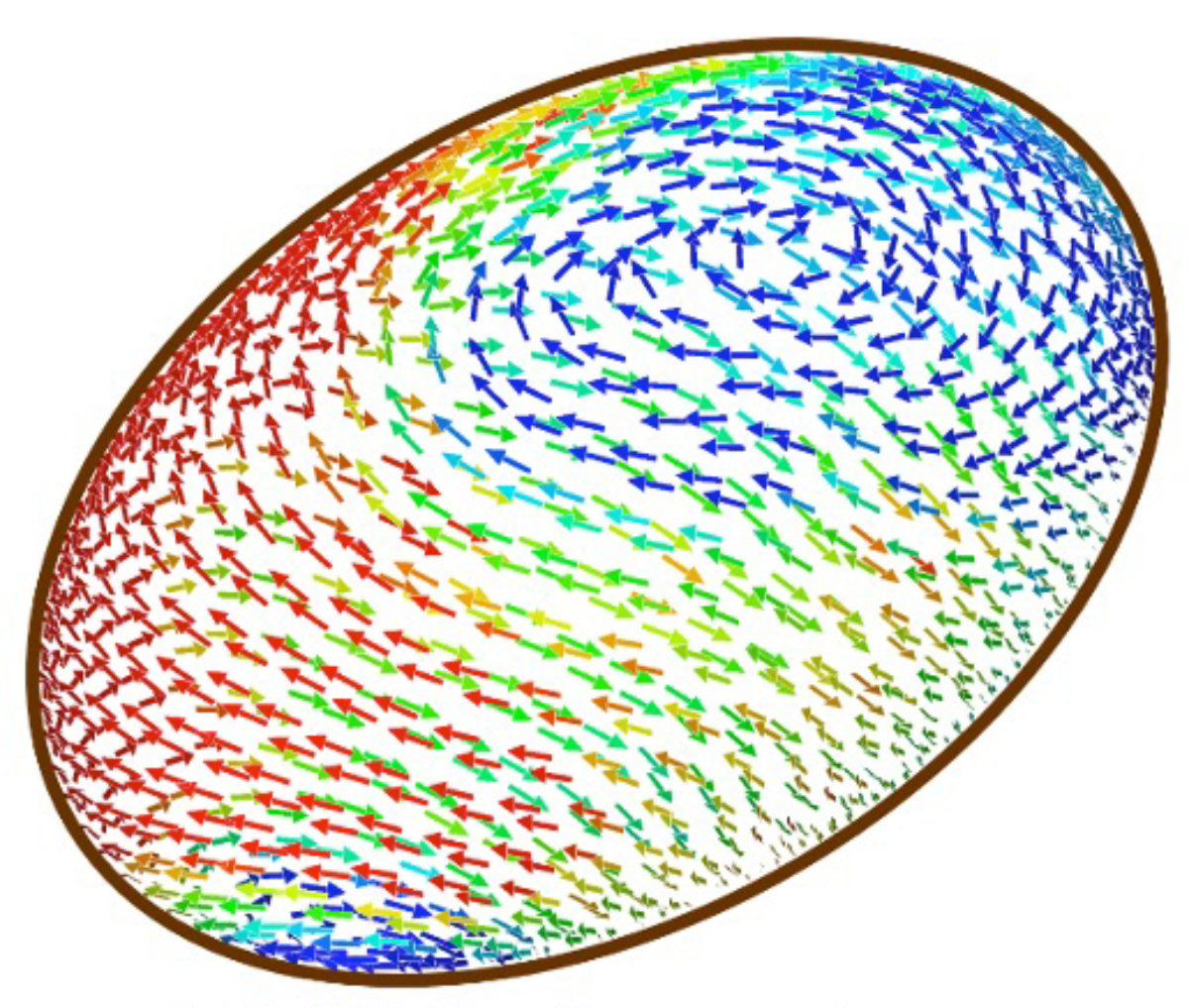Visualizing the Organized Flow of Cells with 3D Modeling
Press release
Swirling Instability mediated by Elastic and Hydrodynamic Couplings in Cytoplasmic Streaming
Takuji Ishikawa*, Takayuki Torisawa, Hirofumi Wada, Akatsuki Kimura*.
*corresponding authors
PRX Life (2025) 3, 013008 DOI:10.1103/PRXLife.3.013008
![]() Press release (In Japanese only)
Press release (In Japanese only)
Cells contain numerous molecules that collectively function to maintain cellular activity. One striking example is cytoplasmic streaming, which is coordinated intracellular flow. Although individual molecules interact locally, how their movements collectively form an organized flow remains a mystery. In 2017, Prof. Kimura’s team studied cytoplasmic streaming in C. elegans zygotes and discovered that microtubules align via endoplasmic reticulum (ER) connections, and direct flow. At that time, Prof. Joanny (Curie Institute) developed a 1D mathematical model to explain flow initiation and reversal. However, a 3D simulation is required for more detailed comparison with real cells.
In the present study, Prof. Ishikawa (Tohoku Univ.) created a 3D computational model, refined through collaboration with Prof. Wada (Ritsumeikan Univ.). This revealed that ER elasticity is crucial—too weak, flow ceases, too strong, reversals disappear. These results matched the experimental data obtained by Dr. Torisawa (Cell Architecture Lab, NIG). This study quantitatively explains cytoplasmic streaming dynamics and provides a foundation for understanding intracellular flow in various organisms.

Figure: A snapshot of the simulation constructed in this study. The ellipsoid represents the fertilized egg of the nematode. The direction and speed of the flow near the surface of the cell are indicated by the direction and the colors of the arrows (red=fast, blue=slow). The image adopted from Fig. 2b of the paper.















